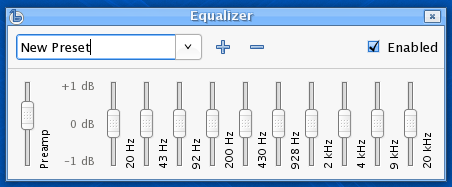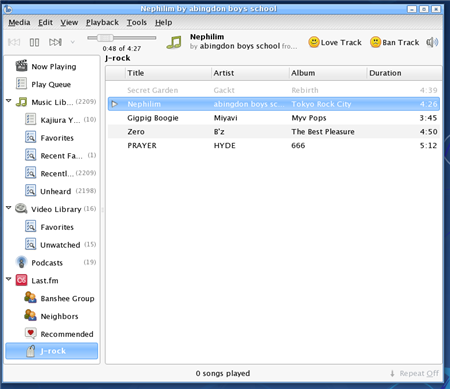 It has been almost a year since we got our first glimpse of the next-generation Banshee media player. The latest beta, which was released on Friday, offers a wide variety of impressive features and a highly polished user interface.
It has been almost a year since we got our first glimpse of the next-generation Banshee media player. The latest beta, which was released on Friday, offers a wide variety of impressive features and a highly polished user interface.
The entire music player has been extensively re-engineered from the ground up to provide a better user experience. Banshee's startup time and memory footprint are impressively low in 1.0 beta 2. Performance improvements have eliminated the long waits and profoundly frustrating loading screen that plagues the 0.13 series. Many of the features are also more responsive and less resource-intensive.
The most significant new feature in Banshee 1.0 is support for video. Users can import video files into the program, filter them based on search parameters, organize them into playlists, and play them just like audio files. When a video is playing, it is displayed in Banshee's new Now Playing view, which also supports a fullscreen mode. Banshee uses the GStreamer multimedia library for audio and video playback, so it supports all of the same formats as Totem. Although video support seems to be integrated very well with Banshee's library system, there are still a lot of important video features that haven't been implemented yet, like support for configuring subtitles, changing aspect ratios, and choosing between multiple audio streams. In time, Banshee could eventually be used as a full replacement for Totem.
Banshee's much-improved podcast manager supports video content too. I tested this feature extensively by watching numerous videos from the Onion News Network (it was a tough job, but somebody had to do it!). Podcasts can be automatically downloaded to the local drive for later playback or streamed directly from the remote server.
Banshee 1.0 beta 2 also offers tight integration with the Last.fm social music site. Users can see their top artists and other Last.fm information directly through the Banshee user interface. It will also provide easy access to Last.fm stations including recommendations, groups, and tags. Menu items are included that allow users to toggle Last.fm reporting and jump to their profile page.
Banshee's user interface also got a big overhaul. The new media browser supports much more elaborate filtering and allow users to select multiple items at once. It has some nice aesthetic enhancements such as support for displaying automatically downloaded album art in album listings. The browser can be displayed horizontally along the top of the program, or vertically between the source list and the track list.
There are a bunch of other features that are worth noting too, like Banshee's new built-in equalizer, support for integration with the Brasero CD burning program, and the play queue. New features can be added easily by third-party developers with the plug-in system and Boo scripting interface. Banshee also exposes much of its internal functionality through D-Bus so that external programs can interact with it and take advantage of its functionality.

There are many well-designed audio players available for Linux that I have used over the years, including XMMS, Juk, Rhythmbox, and Muine. Although there are plenty of choices out there for users with specific requirements and expectations, it seems like Banshee and Amarok are emerging as the most powerful and complete audio players for GNOME and KDE respectively. Banshee 1.0 beta 2 has replaced Rhythmbox as my player of choice on the desktop.



reader comments